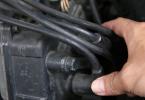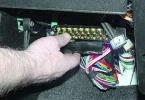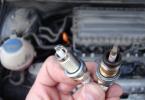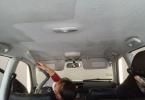Car operation is inseparably associated with the generation of noise, which does not have the best effect on the state of the human body.
Soundproofing is carried out in stages. Taking care of only one part of the car cannot achieve excellent performance, but it is easy to improve skill. It is better to start work with anti-noise door treatment, moving on to the trunk, hood, roof and floor.
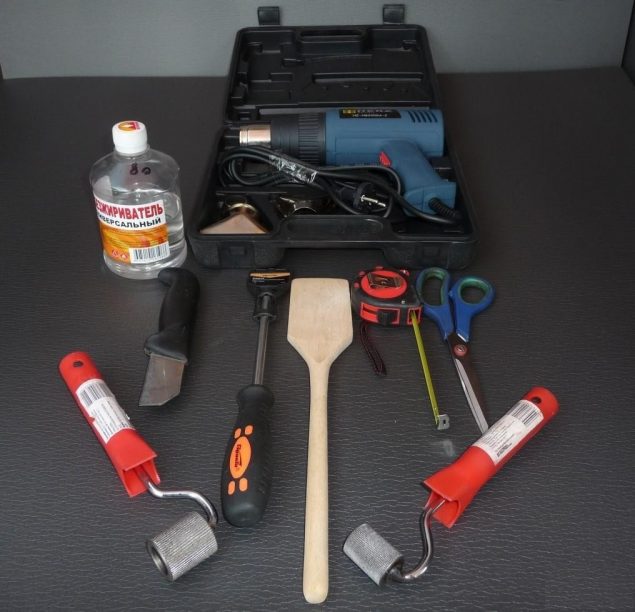
What tools are worth preparing:
- a stitching roller is a simple device, but a useful one, which allows you to roll the material used with high quality;
- building hair dryer - indispensable for products, the installation of which must be accompanied by heating;
- scissors are required for cutting, giving the parts an optimal shape;
- degreasers, solvent for processing, cleaning the working surface of metal;
- knife, screwdriver (may come in handy).
In order to make a high-quality soundproofing of the car with your own hands, the materials must be selected correctly. STP products are attracted by the best characteristics; Shumoff has also proven itself well. You can select other options, having previously studied the properties.
Most common materialsSTP:
- Vibroplast (Silver, Gold) - a group of new products differing in thickness and weight. These are flexible, resilient, vibration-absorbing sheets with a self-adhesive base, coated with aluminum foil. Highlighted resistance to moisture, anti-corrosion performance, ease of installation.
- BiMast is another series used for vibration isolation. There are 3 types with different efficiency. Warming up is required for styling. Multilayer construction, including bitumen, rubber composition.
- Splen is an excellent sound and heat insulator. May vary in thickness. There is an adhesive base, it takes the desired shape well.
- Accent - used for sound absorption, has an open-cell structure.
- Madeleine - represents a group of gasket materials, is a sealant. A fabric is used as a base.
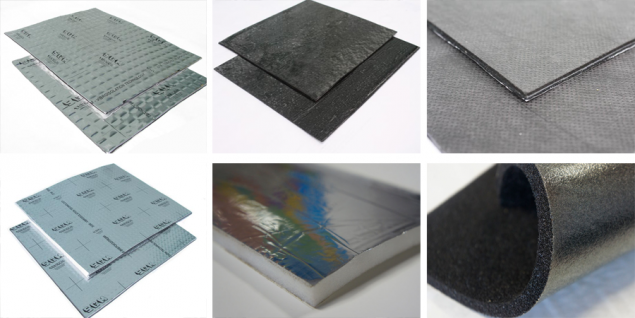
Noise insulation of car doors
Car doors are most often subjected to soundproofing. Even after the completion of the minimum set of works, there is a reduction in noise, the penetration of extraneous sounds from the outside. By choosing the standard and maximum insulation levels, impressive results can be achieved. The main thing is to think over step by step how to make sound insulation in the car correctly. The process begins by removing the skin.
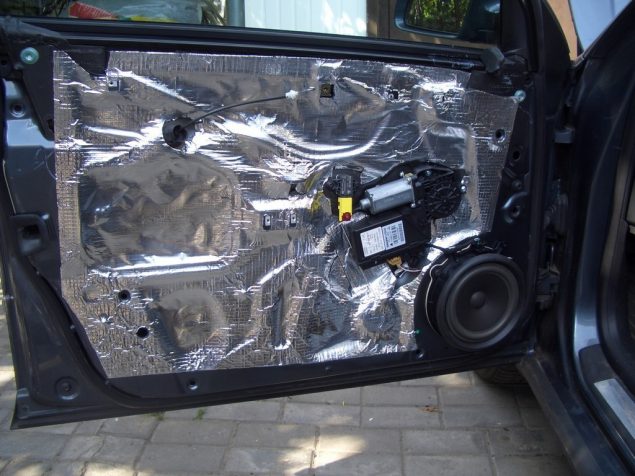
The minimum amount of work involves:
- Bonding vibration-absorbing sheets on the inside of the door in the area where the speakers are located. The Vibroplast series is suitable. The thickness is selected depending on the characteristics of the metal. The larger the volume of the treated surface, the better. The stiffeners do not affect, the need for the correct operation of the cables and rods is taken into account.
- The next layer should be soundproofing, Accent is suitable. Used to prevent the penetration of extraneous noise, it is also suitable for dispersing sound from speakers. It is glued to vibration isolation, keeping a distance of 3-4 cm from the drainage holes.
- The inner part of the cladding requires no less careful study. The joints are processed with hot glue or sealant. The places most prone to noise generation are covered with a vibration absorber. Finally, a cushioning material is applied.
At each step, it is important to consider the weight of the raw materials used. Excessive weighting is fraught with sagging of the part and the need to install new hinges. For rear doors, simpler, thinner products can be used.
Work in the luggage compartment
When removing the skin, it is recommended to inspect the gaps between the removable trim and the body. If the distance is sufficient, sound insulation can be glued. If the performance is insufficient, this should not be done, since the sheathing will not snap into place.
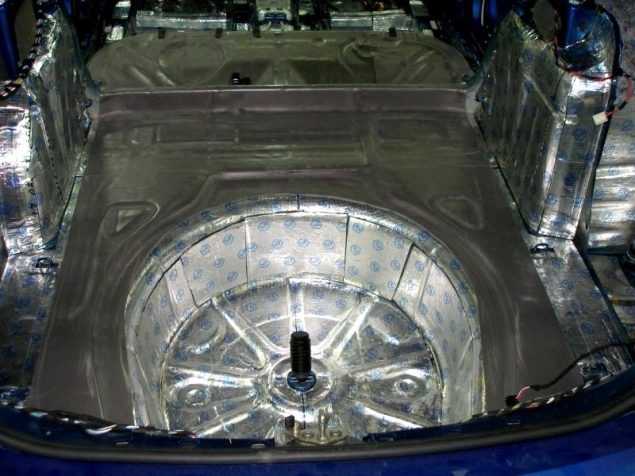
- Insulating wheel arches is the first stage of work. Used BiMast (Bomb) of the greatest thickness. When applying vibration isolation, it is not recommended to leave gaps between the joints.
- The floor, the area of the silencer resonator, the spare wheel niche, the wings - everything is carefully covered with vibration isolation.
- The accent providing sound absorption is applied in the next layer. The elements are trimmed if necessary. If a solid layer interferes with the sheathing device, it is trimmed.
- The final layer is soundproof, applied only to a sound-absorbing base, thermal insulation.
Working with the trunk lid
The process takes a minimum of time - vibration isolation is applied between the stiffeners, and after that, a sound-insulating product. Special attention is paid to the design if a subwoofer is to be installed. Do not glue the holes provided for ventilation, which also applies to the trunk itself.
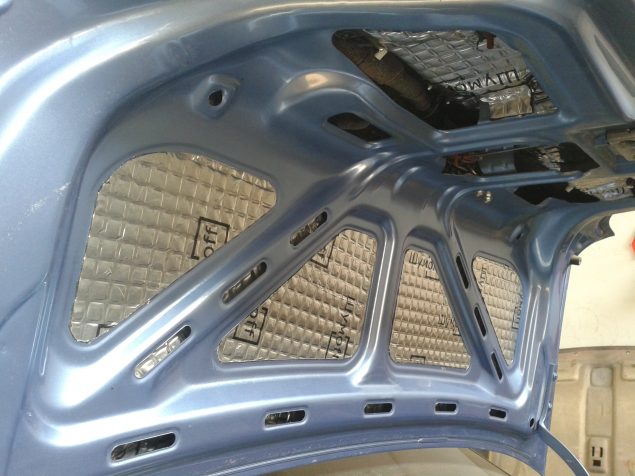
Subtleties of noise insulation of the hood
The soundproofing of the hood is carried out in a similar way. Vibroplast is placed first, then Accent. The product is distinguished by thermal insulation properties, resistance to high temperatures, which is important for the engine compartment.
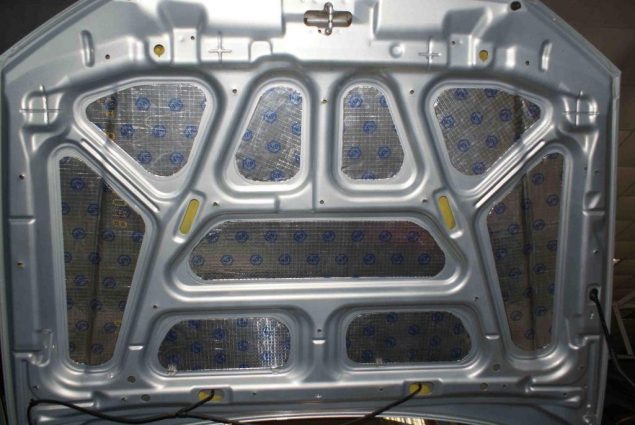
Anti-noise treatment of the ceiling space
Thinking about whether it is worth making a car soundproofing, you need to pay attention to the results that an integrated approach gives. In such a situation, noise processing of the roof will be useful.
It has a large area, and the material used in production is thin metal. Accordingly, there should be standard insulation. It is left or removed if it does not hold well. During operation, it may be necessary to increase the panel stiffness, depending on the area. The procedure begins with the dismantling of the trim.
- Vibration absorbers are the first to fit. If structural reinforcement is required to prevent resonance, a profile made of perforated steel is used. It is important to bypass the stiffeners so that later the finish will fit into place.
- Accent or Splan provide sound absorption. The first product is also distinguished by good thermal insulation.
- Madeleine or Bitoplast is laid in the last layer before sheathing. The second option is preferable, since it is distinguished by a sticky base, moisture resistance, and durability.
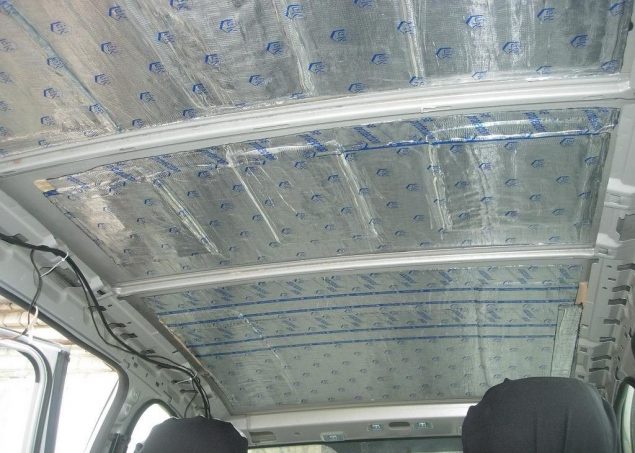
How to perform floor soundproofing?
To work with the floor, the area of the engine compartment, it is necessary to dismantle the trim, chairs, carpet. Correct performance of work allows you to achieve the best performance, minimizing noise from traffic on the road surface, impact of stones on the bottom. The base metal of the car is pre-cleaned and degreased.
- The first step involves pasting metal surfaces that were covered with a factory carpet. This is the area under the dashboard, the feet of the driver, passengers. Attention is paid to the area of the engine compartment, arches. Better to use BiMast Bomb (the thickest vibration isolation). To avoid voids, the details are trimmed. The styling process requires warming up.
- The area of the engine compartment and arches requires additional use of soundproofing Barrier, Splen. Since vibration isolation alone does not cope with the load.
- Accent is the next layer used to completely cover the work plane.
- Laying the soundproofing membrane is the final stage.
When performing this procedure, it is important to ensure that the maximum metal surface area is covered.
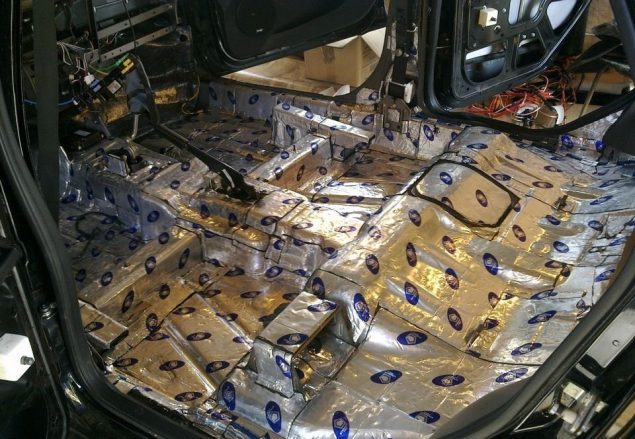
Additional insulation for wheel arches
Sound insulation of the floor, ceiling, doors, hood and trunk is included in a comprehensive approach. Thinking over how to properly insulate a car, it is worth paying attention to the wheel arches. Their noise insulation will provide increased protection, comfort.
The process of working with wheel arches involves:
- Dismantling the wheel arch liners, thorough cleaning of the parts and the inside of the arch.
- Laying the Vibroplast product using the Gold series.
- Additional anti-gravel treatment is recommended.
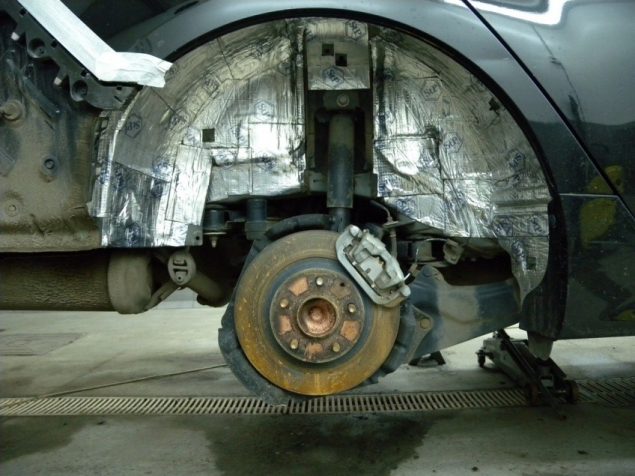
Lockers soundproofing:
- It is necessary to glue the Vibroplast (Silver is suitable) on the back of the element.
- Bitoplast will be required to eliminate squeaks and vibrations.
With the correct implementation of such procedures, the noise levels in the cabin are reduced. There will be no impacts from pebbles while driving. The level of comfort will increase, which is important for the driver and passengers.
